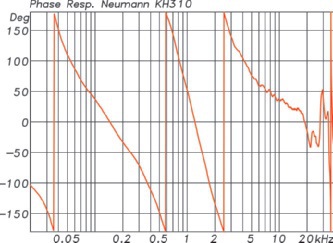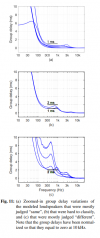why do telephone and 2-Way Emergency Radio Systems only operate on 300 - 3000 Hertz, for human voice communications?
Finally, My brain can be of SOME use.
Bell Labs and others did some real digging here, but the real simple reason was bandwidth required to understand speech. And balance that with implementation of the POTS telephone system.
It was not all about fidelity with voice, but if it was intelligible and reproducible over a large telephone network and switching infrastructure.
there is actually a lot more that went into this especially when you consider the cabling requirements in how things are routed and how they didn't want conversations to lead over to one another excetera.
simply put the phone system was not optimized for ear sensitivity but for speech intelligibility. (Can you hear me now?)
Texas Instruments basically did the same thing with their speech synthesizer.
The IEEE has a great article on this with some indication as to why:

Chip Hall of Fame: Texas Instruments TMC0281 Speech Synthesizer
If it weren't for the TMC0281, E.T. would've never been able to “phone home." That's because the TMC0281, the first single-chip speech synthesizer, was the heart (or should we say the mouth?) of Texas Instruments' Speak & Spell learning toy. In Steven Spielberg's 1982 blockbuster movie, the e...
 spectrum.ieee.org
spectrum.ieee.org

one of the most very important aspects of this range is the actual Hardware used to reproduce and record the speech. your basic telephone handset has a very limited range of frequencies that can produce faithfully and this is the range where you can basically make a speaker out of the cheapest components and it still functions properly in this frequency range.
same thing with microphones. that famous cheap microphone sound?
interesting how it matches the same bandwidth huh?
further proof of this can be pointed to at data transmission standards over plain old telephone lines or pots.
A (Mostly) full list can be found here:
General information about modems and modem standards
Note: This document deals with largely outdated modem standards and terminology. For more recent information about modem standards and terminology, see the...
But the basic idea is from ITU-T
It goes into here from the condesned version on the WIKI
The ITU Full Doc is here for that bandwidth:
Fun FACT! Those voice standards are made for Male voices! Hence why they updated the standard.
It really has less to do with frequency or allowing the sensitivity measured in PHON. Rather its goal is to provide the bandwidth needed for having voice communication being understandable under the wide parameters of speech going on Via certain transmission medium whether it's a wireless medium or a wired system such as our telephone system of the past based on analog transmission.
I think Page 17 covers voice and ear sensitivity as well as frequency range. Its a Free PDF download.
one thing that people forget about when they wonder why there telephone lines are band limited also has to deal with how early modems worked. For example, x.25 would still work even when your telephone lines were rusty steel wires. and if you look at that range that is audible you will notice that you get the least amount of dropped signal in that range over the most CRUMMIST of telephone lines out there.
so Basically, its more than just ear sensitivity to a certain tone or frequency or bandwidth. it also has to do with how your brain perceives those frequencies as an intelligible speech and how things like Faxon ATM machines and digital devices would operate on that Network in conjunction with the first.
Further evidence that fidelity or sensitivity was not a priority of this band would be in how the military implemented sound powered phones. This book will lead you to the patents and companies involved into selecting that band and why it was used for communications. Much of it being stemmed by the research of RCA.

Further proof why that speech band is used and why the Military chose it?
Ever heard of Stromberg Carlson? today we remember them for radios but what they originally were were a telecommunications company as in making phones and being a phone company.
Much of that prefrence in Bandwidth goes to the switching systems of the day as well.
In summary? The 300 to 3000 cycles area is not chosen due to its sensitivity to the human ear, rather its percetablity, being first, and its utilization being in tandem. It does not reflect the parts that the human ear is most sensitive to frequencies.
(As always, corrections are encoruged!




